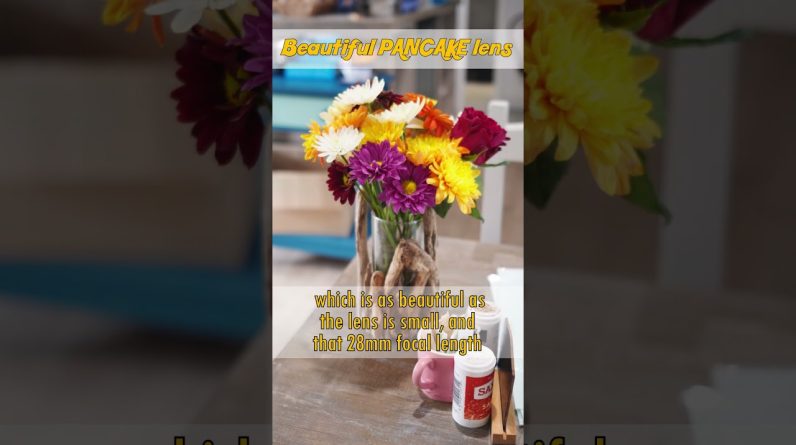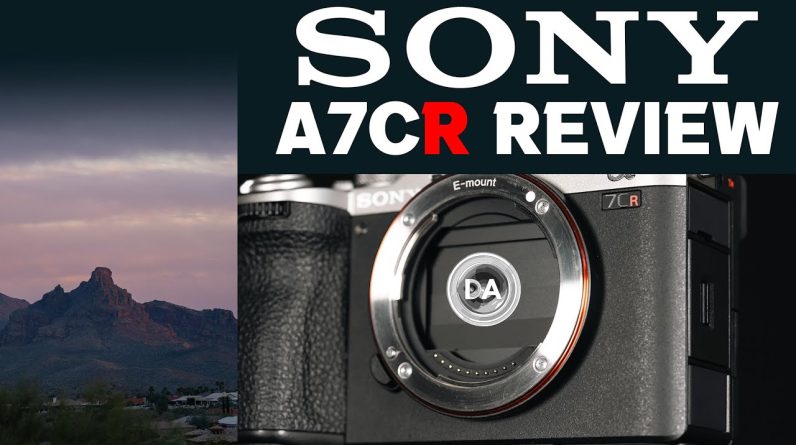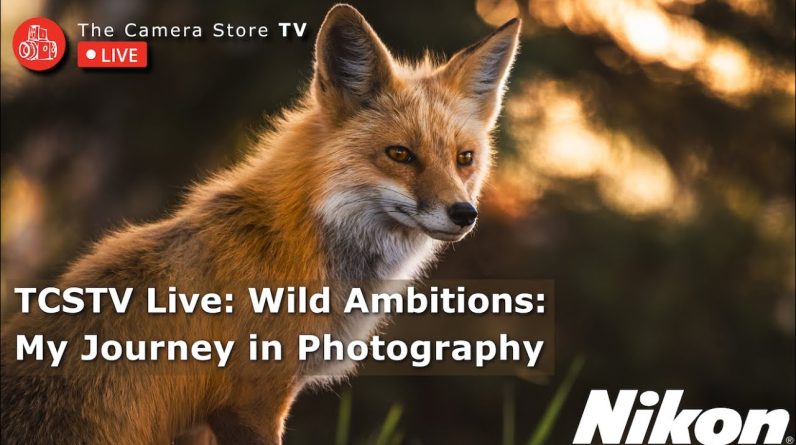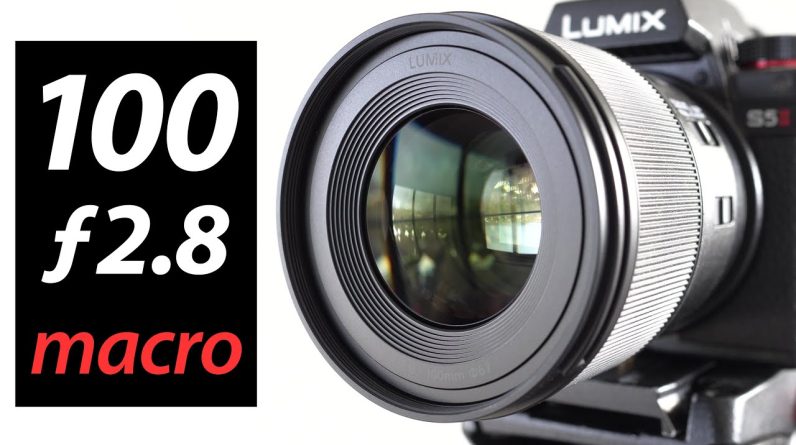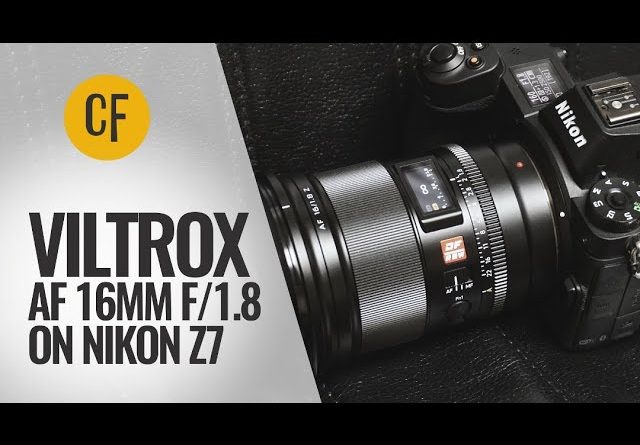[Music] Hi I'm Dustin Abbott a couple of months Ago I was on camera talking to you about The sigma 10 to 18 mm f2.8 DC DN lens For apsc mirrorless cameras at that Point I was doing the Sony e-mount Version review of that lens but I Express an interest in revisiting both It and counterpart the 18 to 50 mm f2.8 Which I'll release a review of next week But interested in looking how these Lenses which are very competent on Sony How they handle the transition to Fuji And in particular to the very demanding 40 megapixel sensor of the xh2 xt5 and I'm assuming future cameras I will I'm Actually going to do a video episode in The future to kind of explore whether or Not not Fu Fuji actually took it too far When it comes to the resolution level of This camera and the reason why I say That is while I love high resolution Cameras I own a Canon R5 45 megapixels a Sony Alpha 1 50 megapixels and Sony a7r Mark 5 which is 61 megapixels and then This xh2 which is 40 megapixels and so On paper 40 megapixels would be the Smallest resolution point of my four Main cameras however on apsc with that Smaller sensor that's a pixel density That's equivalent to about a 91 Megapixel sensor on full frame which is A whole other ball game and what I have Discovered as a lens reviewer that
Spends obviously a lot of time with Dozens of lenses every year is that this Sensor makes it so demanding that there Are very few lenses that actually really Excel on that sensor which means that so Far I've been kind of keeping a a short List of lenses that I really feel like Fully resolve this sensor and it remains A fairly short list so as zoom lenses It's even more challenging than the Prime lenses that have really worked on The 40 megapixel sensor because Obviously they've got to do a lot more In terms of engineering and so there's a Lot more expectation there so this lens Was really great on Sony So today we're Going to explore whether or not it Actually works well on Fuji as well and On a 40 megapixel sensor so I do want to Say thank you to Sigma Canada for giving Me a loner and so that I could kind of EXP expl this for myself so let's Quickly position the market on Fuji the Competing kind of primary wide- angle Zoom lenses are the Tamron 11 to 20 mm F2.8 retails for $829 us there is the Fuji 10 to 24 mm F4 ois so smaller Maximum aperture but has an optical Stabilizer and that is $999 and then there is the kind of the Premium big option which is the 8 to 16 Mm f2.8 lmw lens from Fuji and it Retails for $1,300 the sigma is only
$599 it is the smallest the lightest and The cheapest of these kind of four Primary options it has a constant f2o Aperture f2.8 aperture like three of the Four lenses and it has a little bit Smaller of a zoom range it goes from 10 To 18 mm and yes the Fuji 8 to 16 mm has Kind of the the same number in terms of Millimeters but if you're looking at a Zoom ratio it's actually a two times Zoom ratio whereas this isn't just Because of because of where it starts at 8 mm and so the downsides are is Obviously the most constrained Zoom Range but this is a lens that is Wonderfully Compact and was brilliantly Sharp on Sony so let's see how it holds Up in this sphere as well today so when It comes to the build and handling I've Already reviewed this lens and if you Want to dive into that you can take a Look either at my text review or check Out that video review of the Sony Version because basically these are Identical other than just having a very Slightly different weight to them and so The here in the the Fuji uh x-mount Version it is 72.2 MM in diameter by 64.3 mm in length that's 2.8 x 2.5 in it Weighs in at only 250 g or 8.8 o and so It is just ever so slightly lighter About 5 G lighter in the X Mount and I Think that's most because the X Mount Diameter of the actual Mount itself is a
Little bit smaller about 3 MIM smaller Than a Sony E Mount which I tested Before so just a little bit smaller so Maybe just a little bit less material in There making it ever so slightly lighter The build quality as noted before is Nice um there's a good design to it Everything handles fine little bit Different design with the zoom ring Being up front and being right up there Close to where the lens Hood attaches And I will note that again if you missed It last time this is a different kind of Lens Hood design rather than bang adding It on you align it and it pops into Place and it's kind of spring held there And you just have to do a little Rotation to release it and there's Another point where you can align it for Uh reversing and storing it in that way Build quality is nice here however there Are no add conditional features uh there Is no aperture ring so that is going to Set it apart from the Fuji options and Um as far as the weather ceiling goes There's only a gasket at the lens mount The Tamron and the two Fuji lenses have A more thorough weather ceiling as a Part of their design particularly the 18 8 to 16 mm which is the premium option Of the bunch and so the handling is Great but really your biggest selling Feature is the fact that it is so Compact and light while offering that
Really Dynamic wide angle of View so getting to some of the unique Areas for food I always I'm always Interested to see how lenses make that Transition that are kind of multi-art Platform lenses how they do on Fuji Fuji's autofocus in my opinion is a Little less sophisticated than what I See on either Canon or Sony the other Two major platforms that I review on and Where I find that Fuji has made its kind Of major breakthrough as far as Autofocus is not so much in the core Autofocus system but rather in its AI uh Kind of learning and tracking and so if You have a trackable subject on frame Fuji's autofocus does pretty well it's a Little less sophisticated if you don't Have that kind of trackable you know That the algorithms detect a trackable Object or subject on frame doesn't do Quite as well in that regard a little Less sophisticated particularly when it Comes to the video side of things so as Far as the overall performance this kind Of wide angle Zoom like this it's Frankly not particularly demanding on Autofocus and so as a byproduct I Had No Reservations really on autofocus Performance for Stills uh as you can see Here Focus was quick and fast making Transitions whether indoors or outdoors I had no issues with it detecting and Tracking the eye of a subject and so you
Can see from this that it was doing a Good job staying sticky on the eye and As far as my overall Focus I found that For Still's Focus was just fine you know Whatever object or subject I was taking Photos of I had good you know accuracy And uh autofocus was was quick it was Quiet it was accurate so no reservations There now when it comes to the video Side of things that's where the the Wheels come off just a little bit and so You can see in the autofocus pulls test Here that there is definitely more Hunting and settling focus is just in General less confident than what I saw On the Sony e-mount version and which it Just kind of whipped back and forth Without any hesitation in this case you Can see that it's just a little bit more Uncertain The positive from Sony remains here this Is a lens that has relatively low Focus Breathing and so that is obviously a Strength there now when it cames to come To my hand test you can see that uh it Did fine in terms of going back and Forth there was a few occasions where it Was a little bit less reactive than what I saw on Sony but again because there is That AI trackable subject in the frame It does a better job of not kind of Hunting or settling but just going to The eye and staying there so in Particular from the transitions to the
Hand from the hand to the eye I found That autofocus was more confident in That situation and again because I think That's where the strength of Fuji Autofocus is so in general I would say That the video AF is better when there's A trackable subject in the frame so That's good news for you know something Like vlogging or if you're wanting to Use this for you know wedding videos or Things like that I think that it's Probably going to do fine and of course If you're accustomed to shooting on Fuji You probably already recognize where the Fuji limitations are anyway so I would Say that this lens actually did a quite A good job of handling that transition Uh to the X Mount and to Fuji's Autofocus system I think that this is Really about as good as what I've seen On any of the zoom lenses that I've Tested to this point so I give it good Remarks in regards to that so as we Noted before this is a optical design With 13 elements in 10 groups it was a Good MTF chart the lens looked really Great on Sony at a 26 megapixel Resolution point so the question is is How does it hold up here on Fuji and That is the big question so we're going To dive in together we're going to take A look and also offer up a little bit of Perspective as a part of this let's dive In and take a look together so we'll
Start by taking a quick look at Distortion at and vignette at 10 mm and What I find is the Distortion pattern is As I expected it is is basically Identical it's the same Optical design What where it's going to vary is when it Comes to the vignette which is commonly Been the case with thirdparty lenses That are on multiple platforms for my Manual correction here you can see that I corrected at about a plus 25 that gets The interior lines pretty good but you Can see there's a little bit of a Mustache pattern that's left obviously The correction profile will take care of That better where things really differs When it comes to the amount of vignette Whereas before I only needed about half Of that vignette correction on Sony I Need 100% here on Fuji and I the only Guess that I can have is that it has to Do with the smaller diameter of the Fuji Lens mount and it seems like these Lenses do a little bit better on you Know something like Sony rather than What they do on Fuji for whatever reason Likewise at 18 mm you can see that the Distortion pattern has swapped to a Little bit of pin cushion Distortion and Vignette remains pretty heavy I Corrected the Distortion here with Aus 7 And vignette was a little bit lighter But still took about a plus 81 so in Both cases I was about a a plus 40 in
Terms of the amount of Correction Relative to what I had to do on Sony now Obviously I've done a manual correction To kind of show what's going on Underneath the hood but here's a look at A JPEG right out of camera with zero Correction additional correction done to It and you can see that both the Distortion and the vignette are nicely Corrected for in camera so for most People in most situations probably not Really going to be an issue now I had Previously seen that longitudinal Chromatic aberration were quite low that Continues to be the case here on Fuji And you can see jumping all the way in Here and this is at 200% magnification You can just see in these various areas As we transition away from the plane of Focus there's just no fringing to be Seen there no problem there and I don't Really see a lot of fringing and the Bouqu highlights Beyond as well so those Kind of aberration are well controlled Likewise with lateral chromatic Aberations near the edges of the frame I've got Corrections turned off and Again this is shown at 200% Magnification you can see a little bit In this area here obviously that is the Worst without any kind of Correction Turned on but just the oneclick Corrections will clear that all up so Not really an issue now here's where the
Real challenge comes and that's when you Look at things on this 40 megapixel Sensor at 200% magnification which is The way that I do my test and it really Is a torture test we can see that in the Middle of the frame here at 10 mm f2.8 It really is doing quite well um you Know resolution and contrast looks fine Mid-frame is a little bit softer as you Can see and that's true in this Zone It's true here and then as we go down Towards the bottom it's not a huge drop Off further but you can see that there Is a difference from the left side of The build to the right side where things Are definitely really starting to soften Now in this case stopping down to F4 Definitely increases the contrast as you Can see here the midf frame is better You can see that it now doesn't have That almost like slightly motion blur Kind of look but instead it's things are Starting to solidify and detail is Looking better down here in the corner You particularly see an improvement in Contrast here a little bit better here Though the difference is more Significant as you move just you know a Few degrees away from the edge of the Frame from f4 on the left to f5.6 on the Right you'll get a little bit further Improvement however from f5.6 to f8 you Already are starting to lose any kind of Potential gains to defraction which
Comes in really early on a high mega Megapixel body like this and as you go Past f8 you'll see that defraction Really starts to do ugly things so by The time you get to minimum aperture you Can see that the idea of image quality Is pretty much done so f8 is really the Practical limit you should go with on This lens now from 10 to 12 mm we can See that in the middle of the frame the They're really quite similar in the midf Frame however we can see that it looks Better at 12 mm relative to 10 mm if we Look down into the bottom we can see That there is also a very minor Improvement there it's not as Significant as the mid-frame but what I Will say is that you get to the very Edge of the frame you can see that it's Holding up a little bit better as you Approach the edge of the frame look at This Zone versus this Zone here and so Overall 12 mm is a bit of an improvement From 12 mm to 14 mm we can see that Center of the frame looks very very Similar between the two Here in the midf frame pretty similar as Well not a significant difference there Down into the corner we can see that the Corner actually looks just a little bit Crisper on this side not necessarily Right towards the edge where I would Give a little bit of an advantage back To the 12 mm so a little bit of give and
Take here as we move throughout the zoom Range from 14 mm to 16 mm on the right Again you can see the mid-frame looking Similar though a little bit softer I Would say in the center of the image in Our mid-frame area here about the same Perhaps a very slight Advantage for 16 Mm down into the corner definitely in This Zone I would say that contrast Looks a little bit better on the right I Would say there's ever so slightly more Detail on the left at 14 mm as we look Towards kind of the edge of the frame Here we can see that it's about the same Not a lot of difference kind of looking At another just kind of edge area I Would give a little bit of improvement To the 16 mm side over on the left side Roughly the same not a lot of difference Between the two now from 16 mm to the End of the telephoto range at 18 mm we Can see that again the middle of the Frame roughly similar but I would say Ever so slightly better at 18 mm if we Look here in the mid-frame area we can See that the results are roughly Comparable there's not a whole lot to Take away there Down in the corners again more similar Than different I would say right out to The very edge of the frame ever so Slightly better at 18 mm we'll pop over And look at the left side here again Just to see how that's holding up and we
Can see here on the left side that I Would say that 16 mm looking a little Bit better uh 18 mm just a little bit Softer there now I will note there is Definitely more on tap if you stop on Down to F5.6 we can see that there's definitely More contrast in detail in the center of The frame also true here quite obviously In the middle of the frame and popping Back over here we can see that it is Improved still not fantastic down here In the corner uh on the right side same As true contrast looks a little bit Better but detail is not fantastic so it Sharpens up more in the middle 2/3 of The frame less so out at the edge so for A little bit of perspective of what I'm Talking about about the limits of the Sensor you can see that at 10 mm on Fuji On the left side that's at 40 megapixels Compared to 26 megapixels on Sony on the Right you can see that the Sony image Though it's obviously at a lower level Of you know pixel magnification because There's fewer pixels but even at 200% For both of them you can see that the Sony is just radically sharper and Higher contrast in terms of what it's Doing the mid-frame that's even more Obvious and down into the Corner probably even more obvious there So you can see that this the Sony is Capable of really really resolving very
High Sony version of the same lens I Should say now this is also true at 18 Mm and we can see again that if we look In the middle of the frame the Difference is a little less severe but You can see that the contrast definitely Favors the Sony version the detail that Shows up kind of the apparent detail and Contrast much different in the the Mid-frame there and then off towards the Edge you can just see it significantly Better looking on the Sony version of The lens so that is the challenge that Every lens faces when trying to take on This 40 megapixel sensor monster now That's not on Sigma however and so for The final bit of perspective on this Let's compare the sigma to the the Tamron 11 to 20 millim which is probably Its closest competitor so Sigma at 10 mm Tamron at 11 mm and you can see now both Of them on that 40 megapixel xh2 sensor You can see that the sigma is clearly Handling that transition better than What the Tamron did and so that helps to Give us some perspective less obvious There in the center of the frame so There's obviously some give and take but As we get towards the edge of the frame Once again the sigma clearly looks Better likewise if we compare 18 mm to 20 mm on the Tam on the two telephoto Ends we can see that once again the Sigma definitely looks better in the
Center of the frame not maybe as Significantly but contrast definitely Looks better in the mid-frame again Sigma looks ever so slightly better and Off into the corner it's a pretty Obvious win for the sigma there in the Corners at f/2.8 and so as a byproduct You can see that yes that sensor is Really demanding but the sigma is doing About as well as you can expect in Handling it and of course in regular Real world photography we don't look at Things at 200% magnification so here's 10 mm f5.6 at a more typical 100% Magnification and even on 40 megapixels You can see that the detail is really Quite good as you kind of around in the Image and you look at the area that is In Focus you know detail looks good That's an image that we would be Perfectly fine with likewise here on the Telephoto end we can see that if we take A look into the you know at 100% Magnification take a look at the detail Here it all looks fine and and so Obviously completely useful even on this Very high megapixel sensor as on the Sony version the bokeh quality is you Know really fairly decent for uh for a Wide angle zoom lens like this you can See that it's you know it's not like Melting away in Zeiss likee creaminess But at the same time everything looks Just fine in this image here you know in
This transition zone a little bit of Edging but as we get out towards a more Serious defocus it gets fairly creamy Out there and then likewise when it Comes to flare resistance I found about The same obviously the Coatings and the Optical design are the same so flare Resistance is really fairly good you can See quite little when it comes to either Veiling or ghosting artifacts here you Know with the sun in various positions Everything is holding up fairly well so In general a strong Optical performance Even despite that very difficult 40 Megapixel sensor so I would say that in Conclusion this remains a very Intriguing option for Fu Fuji despite The demands of 40 megapixels you can we Can debate whether or not 40 megapixels Is maybe too much but the reality is is That if you have a camera uh that you Like like I really do like my xh2 it's a Great camera and for the the few lenses That really sparkle on it they really Sparkle it's a great amount of Resolution it looks Fantastic and so relative to the other Zoom lenses that I've tested I actually Think that this lens does quite well and I love the combination of the compact Size and the strong performance I think This is a very strong value for money Lens relative to the competition and of Course you know the advantage of the
Fuji 10 to 24 mm is you know both a Slightly larger Zoom range but then also It has Optical stabilizer and of course If you're shooting with a body that has Inbody image stabilization that ladder Becomes less of an issue and so you get A much cheaper lens with similar or Better Optical performance and a larger Maximum apture of f2.8 making the sigma I think a strong value relative to that And I would say compared to the Tamron 11 to 20 mm that the sigma is the Definite winner compared to that Tamron Uh it goes a little bit wider which is Obviously incredibly important but I Think that it also has a a stronger Optical performance and so that is going To make it to me the lens of choice Particularly when you consider it is Smaller and lighter than what the Tamron Lens is as well so if you are a a Fuji X Mount shooter whatever camera you're Using all the way up to the 40 megapixel Levels I think that this is a really Attractive wideangle option so once Again it's easy for me to give a Recommendation to this lens I think that Sigma really nailed it I'm Dustin Abbott And if you look in the description down Below I do have an updated text review That reflects all of the new Fuji Specific information and so if you want To see that X Mount review you can find It in the description down below there's
Also a fresh image gallery there if you Want to look at that as well as well as Buying links as always thanks for Watching have a great day and let the Light [Music] In

